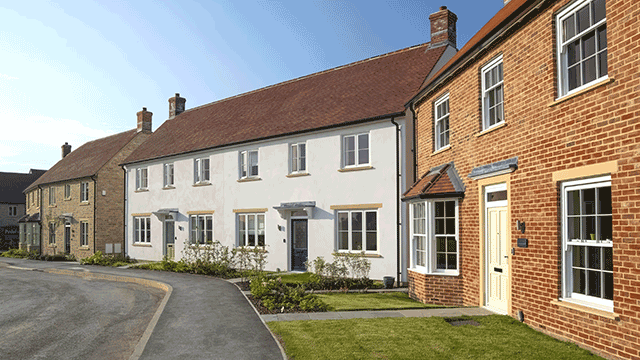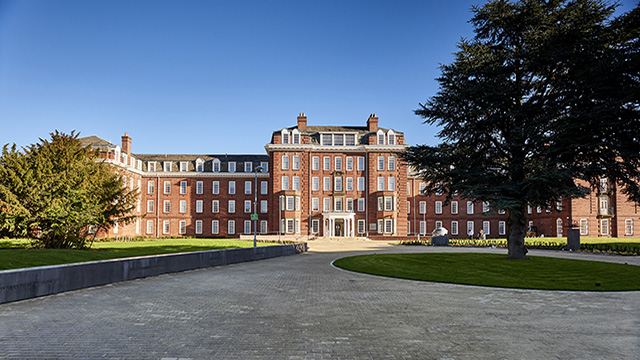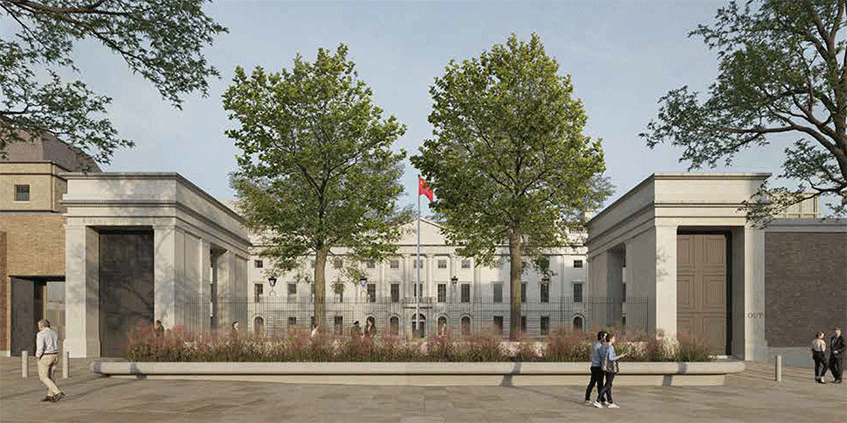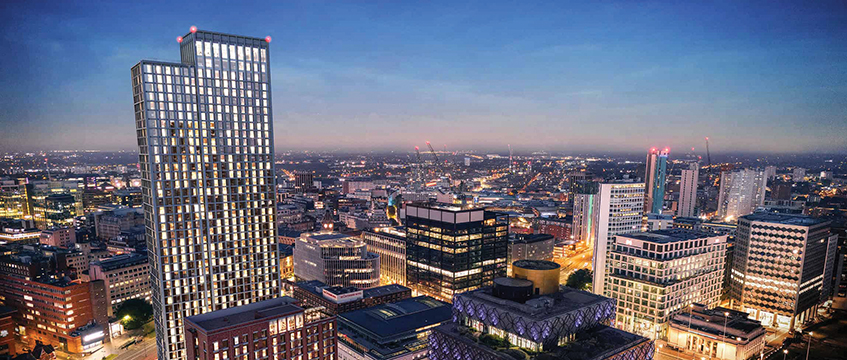Detailed plans for the controversial new Chinese embassy in London have been submitted to local authorities, further outlining the country’s proposals for the redevelopment of Royal Mint Court, EC1.
The site, which spans some 700,000 sq ft, will be one of the largest overseas diplomatic bases in the world, with a value of up to £750m, rivalling the US’s recently opened embassy in Vauxhall, SW11.
The scheme, designed by David Chipperfield Architects, will involve a significant refurbishment of the Grade II listed Johnson Smirke building to turn it into the embassy’s main 54,000 sq ft office.
Sitting at the centre of the site, the five-storey building was originally designed as five apartments for the officers of the Royal Mint in 1811. However, much of it was redeveloped into offices in 1986. It is currently vacant and described as “unfit for modern office use” in the planning application.
The Seaman’s Registry building, which has a Grade II listed facade, will be refurbished to provide another office building, containing 87,000 sq ft of workspace.
The adjacent Dexter House will be stripped down to its core and redeveloped into an eight-storey residential building for embassy staff, containing 331,000 sq ft of housing.
Murray House will also be stripped back and refurbished into an 88,600 sq ft “cultural exchange”. Both Dexter and Murray House have been used as office buildings since they were completed in 1987.
The plans, submitted in mid-June to Tower Hamlets Council, follow a public consultation over pre-application documents which went in earlier this year.
China bought the site in 2018 from Delancey in a £255m deal, advised by CBRE. However, reports have since surfaced regarding the alleged involvement of Lord Udny-Lister as a broker in the deal.
Lister was at the time a non-executive director at the Foreign & Commonwealth Office. He was later appointed prime minister Boris Johnson’s chief strategy adviser but left the role last year.
In further signs that the application process may not be a smooth one, Tower Hamlets councillors voted in April to consider naming roads and buildings in the area surrounding the embassy site Tiananmen Square, Uyghur Court, Hong Kong Road and Tibet Hill to assert “support for the freedom and diversity of our borough”.
China has faced international condemnation for its treatment of the predominantly Muslim Uighur people, which involves alleged forced labour, internment camps and other human rights abuses, according to Amnesty International, as well as a clampdown on dissent in Hong Kong.
The repression of Uighur Muslims is particularly sensitive for Tower Hamlets, which has the highest proportion of Muslim residents (38%) of any borough, according to the latest census.
The embassy project will see the Chinese diplomatic mission in the UK leave its current site in Marylebone for the new complex. Royal Mint Court, opposite the Tower of London, was the home of the Royal Mint from 1809 until 1967.
See detailed planning documents here.

To send feedback, e-mail alex.daniel@eg.co.uk or tweet @alexmdaniel or @EGPropertyNews











